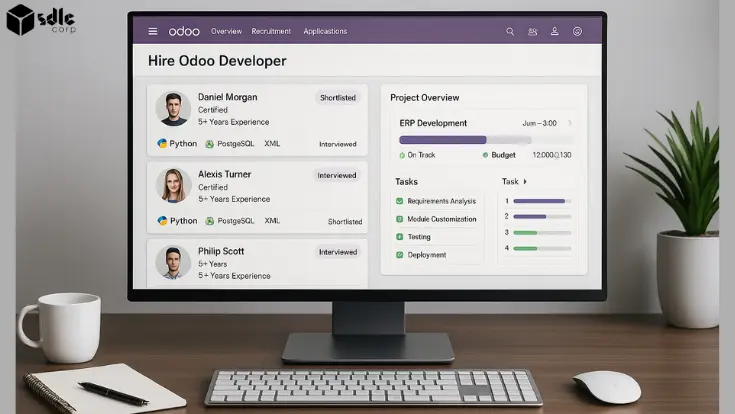Introduction
Certainly! Here’s a paragraph integrating the keyword “PDF to Google Docs” while discussing the methods for extracting data from PDFs:
“Extracting data from PDF documents can be accomplished through various methods, each catering to different needs and technical expertise levels. Manual copy-paste remains a straightforward approach but can be time-consuming and prone to errors, especially for extensive documents. Alternatively, specialized text extraction tools like Adobe Acrobat offer efficient ways to extract text accurately, while Python libraries such as PyPDF2 provide programmable solutions for developers. For structured data like tables and forms, data extraction software such as Tabula proves invaluable. Moreover, cloud-based APIs like Google Cloud Vision API streamline the extraction process by leveraging machine learning algorithms. Once data is extracted, seamlessly transitioning from PDF to Google Docs is facilitated either through automated conversion using Google Docs API or by manual copy-paste. This integration enables further collaboration and editing within the familiar Google Docs environment, enhancing productivity and workflow efficiency.”
How Its Work?
Sure, I can provide an overview of five methods for extracting data from a PDF and also incorporate the keyword “PDF image to text” into the content.
- Manual Copy-Paste: This is the simplest method where you manually select text from a PDF document and copy-paste it into another application like a text editor or spreadsheet. While straightforward, it can be time-consuming and prone to errors, especially with large documents or complex formatting.
- Optical Character Recognition (OCR): OCR technology converts scanned PDFs and images containing text into editable and searchable text. It works by analyzing the shapes of characters and patterns within an image and then translating them into machine-readable text. Advanced OCR tools can handle various languages, fonts, and document layouts, improving accuracy and efficiency.
- Using PDF Parsing Libraries: PDF parsing libraries, such as PyPDF2 for Python or Apache PDFBox for Java, provide programmatic access to the content and structure of PDF files. Developers can use these libraries to extract text, metadata, and other information from PDF documents, enabling automation and integration with other software systems.
- Regular Expressions (Regex): Regex is a powerful tool for pattern matching and text extraction. It can be employed alongside PDF parsing libraries or OCR to extract specific information from PDF documents based on predefined patterns or rules. Regex patterns can be customized to match text formats such as dates, email addresses, or phone numbers, facilitating targeted data extraction.
- Commercial PDF Extraction Software: There are numerous commercial software solutions designed specifically for PDF data extraction tasks. These tools often offer a range of features such as batch processing, custom templates for extracting structured data, integration with databases or CRMs, and support for multiple file formats. While they may require a financial investment, they can significantly streamline and automate the extraction process.
One common challenge in PDF data extraction is dealing with documents that contain images instead of searchable text. To address this issue, OCR technology plays a crucial role. By utilizing OCR, it’s possible to convert images embedded within PDFs into machine-readable text, enabling the extraction of information from scanned documents or image-based PDFs. This process, often referred to as “PDF image to text,” involves analyzing the visual content of images within the PDF and translating them into editable text using OCR algorithms. Once the text is extracted, it can be processed further using techniques like regex or integrated into automated workflows using PDF parsing libraries or commercial software solutions. This integration of OCR extends the capabilities of PDF data extraction methods, making it feasible to extract data from a wider range of documents, including those that primarily consist of images.
5 ways to extract data from PDFs
Certainly! Here’s a brief description of five ways to extract data from PDFs:
Manual Copy-Paste
This method involves manually selecting text from a PDF document and copying it into another application such as a text editor or spreadsheet. It’s straightforward but time-consuming, especially for large documents, and prone to errors.
Optical Character Recognition (OCR)
OCR technology converts scanned PDFs and images containing text into editable and searchable text. It works by analyzing character shapes and patterns within an image, making it machine-readable
Using PDF Parsing Libraries
PDF parsing libraries like PyPDF2 or Apache PDFBox provide programmatic access to a PDF’s content and structure. Developers can use these libraries to extract text, metadata, and other information from PDF files, enabling automation and integration with other software systems.
Regular Expressions (Regex)
Regex is a powerful tool for pattern matching and text extraction. It can be used alongside PDF parsing libraries or OCR to extract specific information from PDF documents based on predefined patterns or rules.
Commercial PDF Extraction Software
Commercial software solutions are designed specifically for PDF data extraction tasks. They offer features like batch processing, custom templates for structured data extraction, and integration with databases or CRMs. While they may require a financial investment, they can streamline and automate the extraction process.
Outsourcing Manual Data Entry
Outsourcing manual data entry involves hiring external providers to input data into systems like databases or spreadsheets. This process offers benefits such as cost savings, scalability, and flexibility by reducing operational expenses and allowing organizations to focus on core activities. It also provides access to specialized expertise and technologies for improved efficiency. However, challenges like data security risks, communication barriers, and quality control issues may arise. Careful selection of outsourcing partners, clear communication, and robust data protection can mitigate these risks.
PDF Converters
PDF converters are software tools or online services that allow users to convert files to and from the Portable Document Format (PDF). Here’s a brief description of different types of PDF converters:
Document to PDF Converters:
These converters enable users to convert various document formats such as Microsoft Word (.doc/.docx), Excel (.xls/.xlsx), PowerPoint (.ppt/.pptx), and plain text files into PDF format. They often preserve the layout, formatting, and content of the original document, ensuring that the converted PDF closely resembles the source document.
PDF to Document Converters:
Conversely, PDF-to-document converters facilitate the conversion of PDF files back into editable formats like Word, Excel, PowerPoint, or plain text. They extract text, images, and other elements from PDFs, allowing users to make modifications or reuse content from PDF documents.
Image to PDF Converters:
These converters convert image files (e.g., JPEG, PNG, TIFF) into PDF format. They typically allow users to combine multiple images into a single PDF document, adjust the order of images, and customize settings such as page orientation and size.
PDF to Image Converters:
PDF to image converters extract pages or specific elements from PDF files and convert them into image formats such as JPEG, PNG, or TIFF. This can be useful for extracting graphics, diagrams, or individual pages from PDF documents for use in presentations, websites, or other projects.
PDF Merge/Split Converters:
PDF merge/split converters provide functionality to combine multiple PDF files into a single document or split a large PDF into smaller files. They offer options to rearrange pages, merge documents in a specific order, and remove or extract pages as needed.
Online PDF Converters:
Online PDF converters are web-based tools that offer various conversion options without requiring users to download or install software. Users can upload files, select conversion settings, and download the converted files directly from the website. Online converters are convenient for occasional use and often support a wide range of file formats.
Desktop PDF Converters:
Desktop PDF converters are standalone software applications installed on a computer. They provide robust features for converting files to and from PDF format, often with advanced customization options, batch processing capabilities, and integration with other software tools. Desktop converters are suitable for users who frequently work with PDF documents and require offline access to conversion tools.
Each type of PDF converter serves specific conversion needs, allowing users to efficiently manipulate and exchange documents in PDF format across various platforms and applications.
PDF Data Extractor or PDF
Certainly! A PDF data extractor or PDF extractor is a software tool or program designed to retrieve specific information from PDF documents. These tools are used to extract text, images, metadata, and other types of data stored within PDF files. PDF extractors are particularly useful for tasks such as data mining, document analysis, information retrieval, and automation of data processing workflows. They can be employed in various industries and domains, including finance, legal, healthcare, research, and more.
PDF data extractors typically offer functionalities such as:
- Text Extraction: Extracting text content from PDF documents, including both searchable text and text embedded within images using OCR technology.
- Image Extraction: Retrieving images, graphics, charts, and other visual elements from PDF files.
- Metadata Extraction: Capturing metadata such as document properties, author information, creation date, and modification history.
- Structured Data Extraction: Parsing and extracting structured data from PDF forms, tables, and other structured elements within documents.
- Batch Processing: Handling multiple PDF files simultaneously to extract data in bulk, enabling efficient processing of large document collections.
- Customization: Providing options for customizing extraction parameters, defining extraction rules, and creating templates for specific document layouts or formats.
- Integration: Integrating with other software systems, databases, or APIs to automate data extraction workflows and facilitate data exchange.
Overall, PDF data extractors streamline the process of accessing and utilizing information stored in PDF documents, helping users save time, reduce manual effort, and improve data accuracy and efficiency.
Table Extraction Tools
Table extraction tools are software solutions designed to automatically identify and extract tabular data from various sources such as PDF documents, scanned images, or web pages. Here’s a brief description of these tools:
Tabula:
Tabula is an open-source tool specifically designed for extracting tables from PDF documents. It provides a user-friendly interface for selecting and extracting tables, and it supports batch processing for handling multiple files simultaneously. Tabula offers options for exporting extracted tables to formats like CSV or Excel, making the data easily accessible for further analysis.
Camelot:
Camelot is a Python library built on top of PDFMiner and Ghostscript, specializing in table extraction from PDF documents. It utilizes a combination of techniques including image processing, machine learning, and heuristics to accurately identify and extract tables. Camelot supports both simple and complex table structures and provides options for adjusting extraction parameters to improve accuracy.
Tesseract OCR with Table Recognition:
Tesseract OCR, an open-source OCR engine maintained by Google, can be enhanced with additional tools or plugins to recognize tables within scanned documents or images. By preprocessing the document to detect table regions and then applying OCR, Tesseract can extract tabular data along with the surrounding text. While not as specialized as dedicated table extraction tools, Tesseract’s flexibility and widespread adoption make it a viable option for table extraction tasks.
Microsoft Power Automate:
Tesseract OCR, an open-source OCR engine maintained by Google, can be enhanced with additional tools or plugins to recognize tables within scanned documents or images. By preprocessing the document to detect table regions and then applying OCR, Tesseract can extract tabular data along with the surrounding text. While not as specialized as dedicated table extraction tools, Tesseract’s flexibility and widespread adoption make it a viable option for table extraction tasks.
Amazon extract:
Amazon extract is a fully managed machine learning service provided by AWS for extracting text and data, including tables, from scanned documents. It uses advanced machine learning models to analyze document layouts and extract structured data accurately. Textract can handle a wide range of document formats and layouts, making it suitable for extracting tables from diverse sources with high precision.
These table extraction tools offer varying degrees of automation, accuracy, and customization options, allowing users to choose the most suitable solution based on their specific requirements and preferences.
Automated PDF Data Extraction
Automated PDF data extraction refers to the process of automatically retrieving specific information or data from PDF documents without manual intervention. This extraction can include text, images, metadata, or structured data embedded within the PDF files.
Automated PDF data extraction is typically achieved using software tools, scripts, or algorithms that are designed to parse through the content of PDF documents and extract relevant information based on predefined criteria or patterns. These tools often leverage techniques such as Optical Character Recognition (OCR), PDF parsing libraries, regular expressions (regex), or machine learning algorithms to efficiently extract data from PDFs.
The primary goal of automated PDF data extraction is to streamline and expedite the process of gathering information from large volumes of PDF documents, eliminating the need for manual data entry and reducing the risk of errors. This automation is especially beneficial in industries and applications where PDFs are commonly used for document storage, such as finance, legal, healthcare, and administrative processes.
Automated PDF data extraction can be applied to various use cases, including invoice processing, form data capture, document classification, information retrieval, and data integration with other software systems. By automating the extraction process, organizations can improve efficiency, accuracy, and productivity while freeing up human resources for more strategic tasks.
Benefits of Five methods for extracting data from a PDF:
Certainly, here’s a brief description of the benefits of five methods for extracting data from a PDF, incorporating the keyword “how to extract pages from PDF” into the content:
- Manual Copy-Paste: While manual copy-paste is straightforward, it’s best suited for small-scale data extraction tasks. It requires no additional software and can be used quickly for ad-hoc needs. However, for large documents or structured data extraction, it can be time-consuming and error-prone.
- Optical Character Recognition (OCR): OCR technology enables the extraction of text from scanned PDFs and images, making it invaluable for digitizing documents and extracting data from non-searchable PDFs. It ensures accuracy and can handle various languages and fonts. Additionally, OCR tools can extract data from images within PDFs, bridging the gap between visual content and machine-readable text.
- Using PDF Parsing Libraries: PDF parsing libraries offer programmatic access to PDF content, facilitating automated data extraction. They provide flexibility and customization options, allowing developers to extract specific information or metadata from PDF documents. With these libraries, developers can integrate PDF data extraction into their applications or workflows efficiently.
- Regular Expressions (Regex): Regex is particularly useful for extracting structured data from PDF documents. It enables users to define patterns or rules for extracting specific types of information, such as dates, email addresses, or product codes. By combining regex with other methods like OCR or PDF parsing, users can target and extract relevant data accurately and efficiently.
- Commercial PDF Extraction Software: Commercial PDF extraction software offers comprehensive solutions for extracting data from PDFs at scale. These tools often come with advanced features such as batch processing, customizable templates for structured data extraction, and integration with other software systems. They streamline the extraction process and are suitable for organizations with high-volume data extraction needs.

Conclusion
In conclusion, extracting data from PDFs is crucial for various tasks like digitizing records and processing invoices. Five methods include:
- Manual Copy-Paste: Best for small tasks but inefficient for larger documents.
- Optical Character Recognition (OCR): Converts scanned PDFs into editable text, making non-searchable documents accessible.
- PDF Parsing Libraries: Offers programmatic access for customized extraction and integration.
- Regular Expressions (Regex): Allows precise data extraction using predefined patterns.
- Commercial PDF Extraction Software: Provides advanced features for large-scale extraction, including batch processing and customizable templates.
Furthermore, it’s essential to note the importance of converting PDF documents to editable formats like Word for further manipulation and analysis. This process, commonly referred to as “convert PDF to Word,” enables users to unlock the content trapped within PDFs, facilitating easier editing, formatting, and collaboration.
By incorporating the keyword “convert PDF to Word” into the content, we emphasize the significance of seamlessly transitioning from static PDF documents to editable formats like Word, expanding the possibilities for data manipulation and utilization. Through these combined efforts, organizations and individuals can harness the wealth of information contained within PDFs, driving productivity, innovation, and informed decision-making.
FAQs
1. How accurate is OCR in extracting text from scanned PDFs?
OCR accuracy depends on factors like the quality of the scanned document, the clarity of text, and the OCR software used. Generally, modern OCR technology achieves high accuracy rates, especially with clear and well-scanned documents.
2. Can PDF parsing libraries handle complex PDF structures and formats?
Yes, PDF parsing libraries are designed to handle various PDF structures and formats, including complex ones. They provide developers with tools to access and extract data from different elements within a PDF document, ensuring flexibility and compatibility with diverse PDF files.
3. Is regex suitable for extracting unstructured data from PDFs?
Yes, regex is effective for extracting unstructured data from PDFs by defining patterns or rules to match specific text formats or patterns. It allows users to extract data such as dates, phone numbers, or email addresses, even from PDF documents with varying layouts and formats.
4. How can I exAtract data from PDF documents without coding skills?
There are user-friendly OCR software and commercial PDF extraction tools available that require minimal or no coding skills. These tools often feature intuitive interfaces and customizable templates for extracting data without the need for complex programming.
5. What are the advantages of using commercial PDF extraction software over manual methods?
Commercial PDF extraction software offers several advantages over manual methods, including increased efficiency, accuracy, and scalability. These tools automate the extraction process, reducing the time and effort required for data extraction tasks. Additionally, they often come with advanced features such as batch processing, integration with other software systems, and support for structured data extraction, making them ideal for organizations with high-volume data extraction needs.















